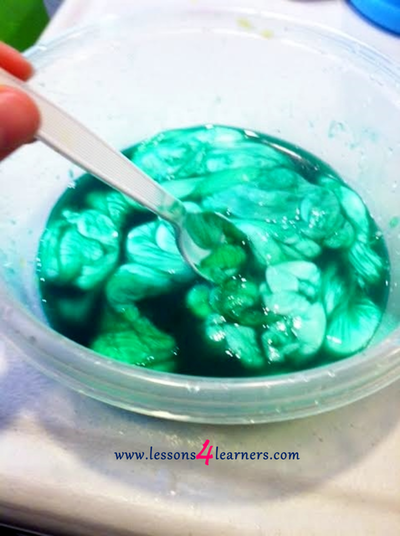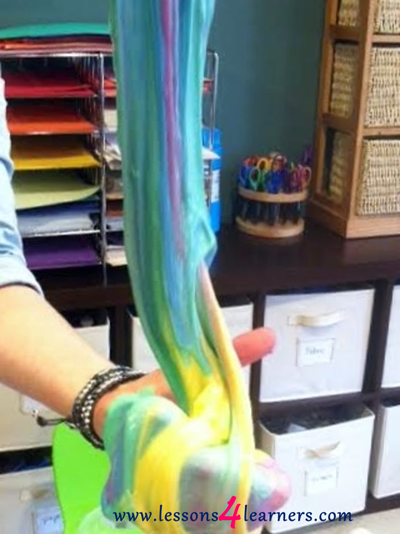Rainbow Slime
Lesson Plan:
|
Activity:
Rainbow Slime
Lesson plan developed by Ms. Erika Geelhoed, BA Ed
Age Group:
* Lesson plan objective and assessment can be adapted to use this activity with preschoolers or school-age children.
Objectives:
Children will:
|
|
II.4.3a
Materials:
|
Procedure:
- Create slime by mixing equal parts liquid starch with glue.
- Add in a few drops of food coloring and mix to create desired color.
- Repeat this process for each color of the rainbow.
- When finished, put the different colored slimes into a large bin.
- Move the bin to an appropriate learning location.
- While they are exploring the new texture, talk with them about what they are experiencing.
- You can discuss the different colors, as well as provide adjectives (such as gooey, squishy, and mushy) to promote language acquisition.
Assessment:
- Observe and record the children’s reaction to the slime.
Note: Please provide appropriate supervision to the children in your care when completing all activities. You will need to decide what types of activities are safe for the children in your care. Appropriate and reasonable caution should be used when providing art and sensory experiences for children. Toddlers require special caution, only use non-toxic materials, and do not allow toddlers to put things in their mouths that are a choking hazard.
Click on the course icon for enrollment information.
Benefits of Sensory Play
|
Young children explore with their senses first. Infants and toddlers naturally initiate discoveries about the world around them, so providing a variety of interesting sensory experiences can pique their curiosity and support their brain development. Even before children can speak, they are developing an understanding of things in their environment by actively exploring them with all their senses.
As they become more verbal, they are able to describe similarities and differences in what they see, hear, taste, touch, and smell. For example, each time a child explores sand, he is confirming his previous explorations and discoveries that sand is dry, gritty, and so forth, and he will eventually notice other materials that share those same characteristics. |














